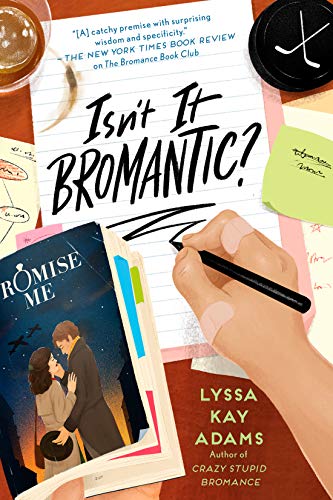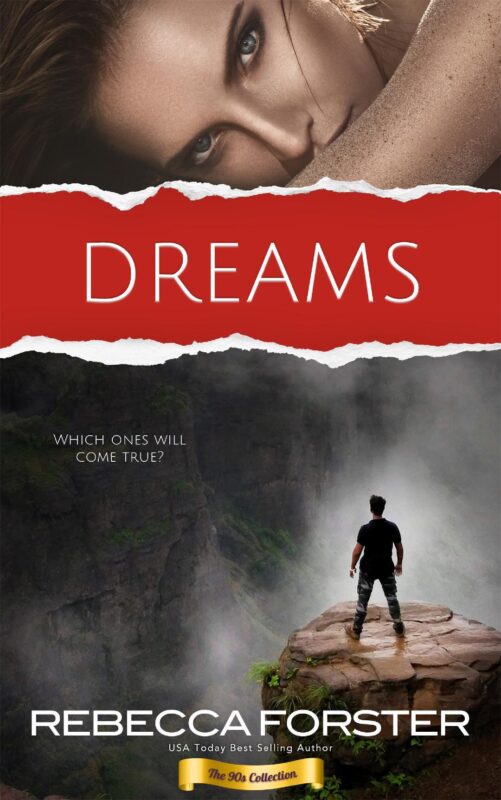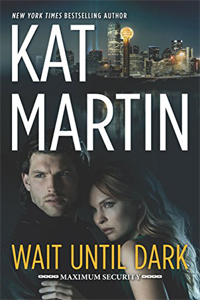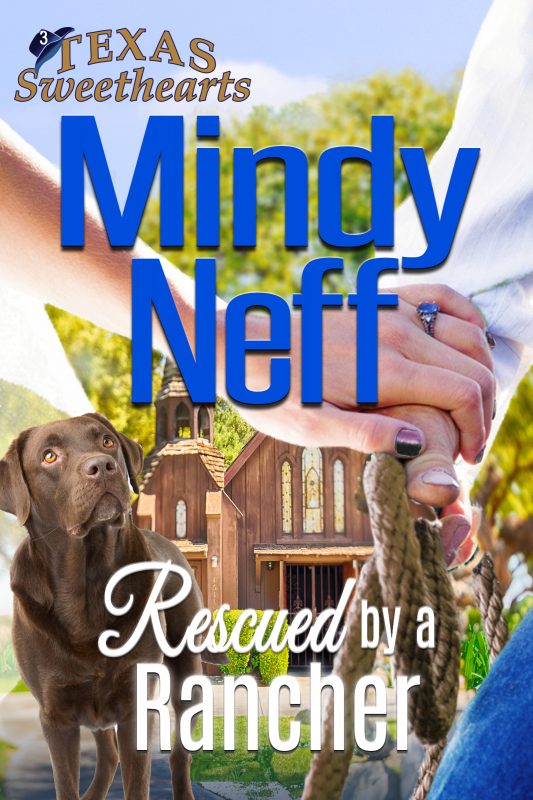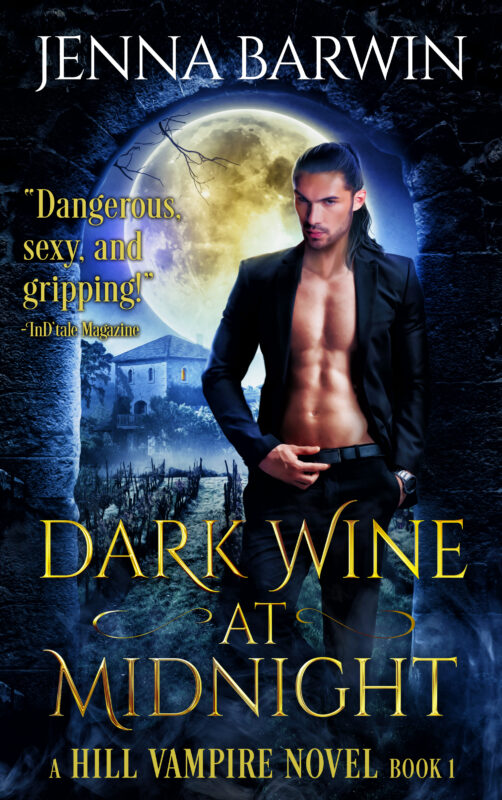Read Rebecca Forster September Featured Author
September 14, 2020 by Rebecca Forster in category Featured Author of the Month tagged as Josie Bates, Lost Witness, new release, Rebecca Forster., September Featured Author, The Witness Series

Read Rebecca Forster!
Rebecca marketed a world-class spa when it was still called a gym, did business in China before there were western toilettes at the Great Wall and mucked around with the sheep to find out exactly how her client’s fine wool clothing was manufactured. Then she wrote her first book and found her passion.
Now, over twenty-five books later, she is a USA Today and Amazon bestselling author and writes full-time, penning thrillers that explore the emotional impact of the justice system. She earned her B.A. at Loyola, Chicago and her MBA at Loyola, Los Angeles. Rebecca has taught the Business of Creativity at University of California Long Beach Writers Certificate Program, UCLA and UC Irvine extension. Married to a Los Angeles Superior Court judge, she is the mother of two grown sons and spends her free time traveling, sewing, and playing tennis.
Have your read Rebecca Forstest’s Witness series?

Josie Bates is back in Lost Witness the eighth thriller in the Witness series.
It’s two in the morning and an aging cargo ship lies off the Port of Los Angeles. Deep in the bowels of the vessel, an important man is dead and the woman who killed him is mortally wounded. On shore another man staggers out of the sea determined to save the woman before she dies or the ship sails. Exhausted and terrified, he goes to the only person he trusts to help, Josie Bates.
He brings with him a history she can’t ignore, a problem that seems insurmountable, and a plea she can’t refuse. But Josie is up against international law, maritime justice, a Port Authority that doesn’t want anything to get in the way of profit, the U.S. Coast Guard who dances to the tune of politics and a captain who swears the people in question were never on his ship.
With the clock ticking, Josie becomes ever more desperate to prove the woman is real and get her safely ashore. What Josie doesn’t know is that the sands of time that are running out may be her own.
Read Rebecca Forster
The Shape of Fiction by Carol L. Wright
September 13, 2020 by Bethlehem Writers Group in category From a Cabin in the Woods by Members of Bethlehem Writers Group tagged as fiction, kurt vonnegut, story graphs, story shape, writing
The Shape of Fiction
Writers are accustomed to thinking about writing with a 3-Act structure, often shown as an incline plane of action rising gradually throughout the story towards the climax. But another way of looking at stories is their shape based not on action, but on the rise and fall of the protagonist’s fortunes—good or ill.
As I understand it, the notion of these story shapes was first proposed by Kurt Vonnegut. Inspired by his research into stories from various cultures while studying anthropology at the University of Chicago, he discovered common patterns of the fortunes of the protagonists. He found that there is not one universal pattern, but several designs, just as the rise and fall of volume and intensity give shape to different styles of music. These shapes cross cultures and time periods to create the stories we love to read and retell.
To visualize these shapes, he used a simple graph. The vertical axis, or what he calls the G-I axis has good fortune at the top and ill fortune at the bottom. The higher on the vertical axis a character is, the happier they are. Conversely, the lower they are, the more miserable they are.
The G-I axis is bisected by a B-E horizontal axis. This takes the story left to right from the beginning (B) to the, uh, well Kurt Vonnegut has various ideas for what the E stands for, but let’s just call it the ending. It looks a bit like this:

Interestingly, his theory was proven when researchers at Washington State University and the University of Vermont did a computer analysis over 1700 stories. (https://www.bbc.com/culture/article/20180525-every-story-in-the-world-has-one-of-these-six-basic-plots ) Text-mining of these stories revealed six basic story shapes, most of which Vonnegut had already described. They graphed each, renaming Vonnegut’s G-I axis to “sentiment scale.” They found that each of the 1700 stories conformed to one of these six shapes:
1. Man in a hole
Our protagonist begins high on the sentiment scale but, by mid-story, finds themselves in low ill-fortune. But, don’t despair. Good things follow, and by the end of the story, our protagonist is once again up in the good-fortune range. This shape is often found in mystery stories and adapts well to the three-act story structure we’ve been taught.
2. Rags to riches
This shape has the main character begin on the lower end of the sentiment scale, but then they rise steadily throughout the story to the upper portion of the G-I axis by the end of the story. An example of this is the story of Little Orphan Annie who starts out as an orphan in a miserable workhouse and becomes the ward of the extremely wealthy Daddy Warbucks, or the story of another orphan, Oliver Twist. Everyone loves a happy ending.
3. Cinderella
From the obvious example, our protagonist begins very low on the sentiment scale, but then rises to a high good-fortune point—only to have it snatched away. Despite being once again in the lower portion of the G-I scale, the protagonist’s despair is not as low as it was. As the story progresses, the protagonist moves back up again to the top of the sentiment. (You have to see Vonnegut describe this one and others on YouTube below.)
4. Riches to rags
This shape is just the opposite of #2. The protagonist begins in the upper range of the sentiment axis, but who falls into poverty and despair. A simple tragedy.
5. Icarus
If you know the Greek myth about Daedalus and his son Icarus who escaped from the island of Crete by flying with wings made of feathers and wax, it won’t be hard for you to envision this shape. Starting around the midpoint of the G-I axis, it rises into good fortune, then falls into the ill fortune range before falling further to the bottom of the G-I scale (when the wax melts because Icarus flies too close to the sun). Not a happy ending.
6. Oedipus
Named for another Greek tragedy, this pattern falls (as Oedipus wanders toward Thebes, killing Laius along the way). But then it rises (when Oedipus defeats the sphinx, becomes king, and marries the queen with whom he has several children and plans to live happily ever after). Oh, but our protagonist is not destined for a happy ending. The story ends with a plummet to the low ill-fortune range (when Oedipus discovers Laius was his father and he has married his mother—who then kills herself. Oedipus puts out his own eyes). A less than cheery shape.
I must confess that I was surprised that every one of the stories studied fit in one of these six shapes. But Vonnegut tells us about two more shapes.
A flatline story shape
While he tells this shape is boring, he also says it often can be found in primitive cultures. There is, however, one Shakespearean classic that employs this shape. Things start low on the sentiment scale, stay low, and end low. Can you guess which one this is? See the video link above to get the answer.
And one final shape Vonnegut offers for your consideration—one we don’t often see—where the protagonist starts at the bottom . . . and goes down. Which story is this? Here’s a hint: Kafka!
All this brings new meaning to the question: What kind of shape is your story in?
In addition to writing posts for From A Cabin in the Woods, Carol was interviewed on A Slice of Orange here.
Books by Carol L. Wright
My Very Own Hero
September 12, 2020 by Denise M. Colby in category The Writing Journey by Denise Colby tagged as Denise M. Colby, heroes, marriageI’ll admit it. I read a lot of romance and have accumulated several favorite heroes in my book list through the years, but there’s just one that I claim in real life as my very own hero, and that’s my husband.

We’ve been married for 25 years now, and I have to say that romance novels have shown me new ways to appreciate bits and pieces that I wouldn’t have otherwise thought of.
Some of my favorite stories include a hero and heroine who are perfect for each other because of the how they compliment each other in the little parts of every day life.
This is what makes a true love match. This is what I mean when I talk about my own hero in my life.
And like in our stories, it’s easy to forget about this layer, especially when we get frustrated with the hero, which happens in our novels, too. It’s one of the things we enjoy when we read a story about two people who are finding out about themselves and this person who has grabbed their attention. And they don’t know where they are going in their journey, but we know they will at some point end up together.
As a new writer, I’ve worked through generic personality traits for the heroes of my books. But, as in our stories and real life, it’s important to find specific traits that make a hero unique. So to dig deeper I had to think about things from my own perspective a bit. I thought about my husband as how I would portray him in one of my novels and there are some specific things that came to mind.
Ways my own Hero is a good fit for me
- He shares my love of Disney, movies, and family time
- Gets offended for me when I’m wronged
- He loves me in his own special way
- Knows when he’s in a no-win situation
- Uses humor when he’s uncomfortable
- Doesn’t complain about my incessant talking and my messes
And as I’ve learned from those book heroes, it’s not always about the things he does, it’s also about the things he doesn’t do – like leave the toilet seat up and he lets me turn the toilet paper roll the way I prefer – all the time.
Sure, my own hero and I are still learning and adjusting to each other, but the romances I read help remind me to take a step back and appreciate the blessings that I’ve been given.

I hope the stories and the heroes I write about are able to do the same for my readers. That’s our goal as writers, right?
If you’d like to find our more about the stories I’m writing, I’d love to have you visit my website at denisemcolby.com.
Meet the unsung heroine of publishing: Miss Proofreader by Jina Bacarr
September 11, 2020 by Jina Bacarr in category Jina’s Book Chat, Writing tagged as author, Boldwood, Boldwood Books, historical fiction, historical romance, Ireland, Queenstown, romance', ship of dreams, stories, story, Titanic, Writer, writing Ode to my Proofreader
My proofreader has the eye of an eagle and patience of a saint,
No matter what I write, she swears not to faint
Through missed commas, wrong tenses, and a lost full stop or two
She carries on in spite of, through and through
But what I never expected when I sent my m/s off with a sigh
Was that parts of my book would make her cry…
———
Last month I wrote about the copy edits and mentioned that I sent my Paris WW 2 historical novel is off to the proofreader!
Oh, my, I had no idea I’d make her cry…
I actually stopped in the middle of proofreading my manuscript when she sent it back to me and shed a tear or two myself, I felt so bad for upsetting her. My first thought was… I had to change the scene, make it happy, not have this lovely professional proofreader stop her work because my characters made her cry.
How dare they!
I was totally surprised how much this affected me.
It’s okay for me to bawl my eyes out when bad stuff happens to my heroine, but I think we writers live in a bubble and don’t know realize how much the stories we tell affect our readers. They’re just as invested in the story as we are.
And for that I thank you for allowing my stories to touch your soul, wrench your heart, and send you on a journey to a place far, far away, but bring them home, nourish them, cheer with them cry with them when you let our characters come into your life.
And yes, my proofreader did finish her proofreading on time (with a tissue or two in tow).
Ode to my Proofreader
My proofreader has the eye of an eagle and patience of a saint,
No matter what I write, she swears not to faint
Through missed commas, wrong tenses, and a lost full stop or two
She carries on in spite of, through and through
But what I never expected when I sent my m/s off with a sigh
Was that parts of my book would make her cry…
———
Last month I wrote about the copy edits and mentioned that I sent my Paris WW 2 historical novel is off to the proofreader!
Oh, my, I had no idea I’d make her cry…
I actually stopped in the middle of proofreading my manuscript when she sent it back to me and shed a tear or two myself, I felt so bad for upsetting her. My first thought was… I had to change the scene, make it happy, not have this lovely professional proofreader stop her work because my characters made her cry.
How dare they!
I was totally surprised how much this affected me.
It’s okay for me to bawl my eyes out when bad stuff happens to my heroine, but I think we writers live in a bubble and don’t know realize how much the stories we tell affect our readers. They’re just as invested in the story as we are.
And for that I thank you for allowing my stories to touch your soul, wrench your heart, and send you on a journey to a place far, far away, but bring them home, nourish them, cheer with them cry with them when you let our characters come into your life.
And yes, my proofreader did finish her proofreading on time (with a tissue or two in tow).
Rewards for a job well done!
September 10, 2020 by Tari Jewett in category Charmed Writer by Tari Lynn Jewett, Writing tagged as " Angela James, "Before You Hit Send, rewardsThis morning, editor Angela James posted in the 30 Day Accountability Group that she’s hosting on Facebook for writers: HERE’S ANOTHER TIP FOR GETTING YOURSELF ON TRACK: MAKE A REWARD SYSTEM
So, what about reward systems? Do they work for you? And if they do, how do you set yours up?
A solid reward system can work for so many things. Years ago, when I homeschooled my two younger boys, I made a reward chart for them. They got stickers for completing each task during the day, and they loved getting the stickers, but when they reached a certain number of stickers they got a small ‘prize’. It might be doing something special with Mom or Dad, getting to pick their favorite lunch out, extra video game time, or a small toy. When they collected a larger number of stickers, they earned another larger prize, usually a field trip somewhere special such as the local aquarium, or the zoo. This tiered rewards system was very motivating for the kids, and the rewards were really for both of us. We spent time together that wasn’t school related, and we had new experiences together.
Some of you know that I’ve recently lost a substantial amount of weight. In the beginning, I was rewarding myself for every 5 lbs. with a manicure, of course, the pandemic has changed that, and to be honest, once I hit a certain point, the weight loss itself became the reward, as well as fitting into smaller sizes! Not to mention, how good I feel, and the increased mobility that I have.
When it comes to writing, of course, finishing the book and having people actually read it is the ultimate reward, but sometimes you need those little incentives to get you to THE END. I used to reward myself with food, a piece of See’s chocolate for completing the day’s word count, dinner out for meeting a larger goal. I also justified dinner out by saying that it gave me more time to write. Obviously, in recent months I’ve learned that those rewards had created a different problem, and I needed healthier incentives.

But, I have another passion that I don’t get to indulge as often as I’d like. Sewing. And that has become my new reward. If I meet my writing goal, I’m allowed to sew, and when I finish the book, I get a new sewing toy! With my weight loss, I need new clothes desperately, so I better get writing! And I may even add new clothes (that I didn’t sew) to my rewards.

Oh, and sometimes a writing class or workshop with someone like Angela James is a reward! A reward that can make your next project even better.
How do you reward yourself for your accomplishments? What are your favorite treats? Or do you feel the accomplishment is reward enough?
Affiliate Links
A Slice of Orange is an affiliate with some of the booksellers listed on this website, including Barnes & Nobel, Books A Million, iBooks, Kobo, and Smashwords. This means A Slice of Orange may earn a small advertising fee from sales made through the links used on this website. There are reminders of these affiliate links on the pages for individual books.
Search A Slice of Orange
Find a Column
Archives
Featured Books
ISN’T IT BROMANTIC
With his passion for romance novels, it was only a matter of time before Vlad wrote one.
More info →RESCUED BY A RANCHER
What Happens When A Texas Sweetheart Is Born With A Silver Spoon? She Stirs Up Trouble In Hope Valley!
More info →DARK WINE AT MIDNIGHT
To save humanity, a reluctant spy must convince a handsome vampire to trust her, despite the dark secrets each carries, and the mutual attraction they can’t resist.
More info →Newsletter
Contributing Authors
Search A Slice of Orange
Find a Column
Archives
Authors in the Bookstore
- A. E. Decker
- A. J. Scudiere
- A.J. Sidransky
- Abby Collette
- Alanna Lucus
- Albert Marrin
- Alice Duncan
- Alina K. Field
- Alison Green Myers
- Andi Lawrencovna
- Andrew C Raiford
- Angela Pryce
- Aviva Vaughn
- Barbara Ankrum
- Bethlehem Writers Group, LLC
- Carol L. Wright
- Celeste Barclay
- Christina Alexandra
- Christopher D. Ochs
- Claire Davon
- Claire Naden
- Courtnee Turner Hoyle
- Courtney Annicchiarico
- D. Lieber
- Daniel V. Meier Jr.
- Debra Dixon
- Debra H. Goldstein
- Debra Holland
- Dee Ann Palmer
- Denise M. Colby
- Diane Benefiel
- Diane Sismour
- Dianna Sinovic
- DT Krippene
- E.B. Dawson
- Emilie Dallaire
- Emily Brightwell
- Emily PW Murphy
- Fae Rowen
- Faith L. Justice
- Frances Amati
- Geralyn Corcillo
- Glynnis Campbell
- Greg Jolley
- H. O. Charles
- Jaclyn Roché
- Jacqueline Diamond
- Janet Lynn and Will Zeilinger
- Jeff Baird
- Jenna Barwin
- Jenne Kern
- Jennifer D. Bokal
- Jennifer Lyon
- Jerome W. McFadden
- Jill Piscitello
- Jina Bacarr
- Jo A. Hiestand
- Jodi Bogert
- Jolina Petersheim
- Jonathan Maberry
- Joy Allyson
- Judy Duarte
- Justin Murphy
- Justine Davis
- Kat Martin
- Kidd Wadsworth
- Kitty Bucholtz
- Kristy Tate
- Larry Deibert
- Larry Hamilton
- Laura Drake
- Laurie Stevens
- Leslie Knowles
- Li-Ying Lundquist
- Linda Carroll-Bradd
- Linda Lappin
- Linda McLaughlin
- Linda O. Johnston
- Lisa Preston
- Lolo Paige
- Loran Holt
- Lyssa Kay Adams
- Madeline Ash
- Margarita Engle
- Marguerite Quantaine
- Marianne H. Donley
- Mary Castillo
- Maureen Klovers
- Megan Haskell
- Melanie Waterbury
- Melisa Rivero
- Melissa Chambers
- Melodie Winawer
- Meriam Wilhelm
- Mikel J. Wilson
- Mindy Neff
- Monica McCabe
- Nancy Brashear
- Neetu Malik
- Nikki Prince
- Once Upon Anthologies
- Paula Gail Benson
- Penny Reid
- Peter Barbour
- Priscilla Oliveras
- R. H. Kohno
- Rachel Hailey
- Ralph Hieb
- Ramcy Diek
- Ransom Stephens
- Rebecca Forster
- Renae Wrich
- Roxy Matthews
- Ryder Hunte Clancy
- Sally Paradysz
- Sheila Colón-Bagley
- Simone de Muñoz
- Sophie Barnes
- Susan Squires
- T. D. Fox
- Tara C. Allred
- Tara Lain
- Tari Lynn Jewett
- Terri Osburn
- Tracy Reed
- Vera Jane Cook
- Vicki Crum
- Writing Something Romantic
Affiliate Links
A Slice of Orange is an affiliate with some of the booksellers listed on this website, including Barnes & Nobel, Books A Million, iBooks, Kobo, and Smashwords. This means A Slice of Orange may earn a small advertising fee from sales made through the links used on this website. There are reminders of these affiliate links on the pages for individual books.


























































